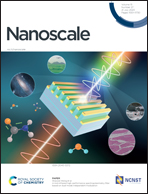Elucidating the performance benefits enabled by YSZ/Ni–YSZ bilayer thin films in a porous anode-supported cell architecture†
Abstract
Increasing the performance and improving the stability of solid oxide cells are critical requirements for advancing this technology toward commercial applications. In this study, a systematic comparison of anode-supported cells utilizing thin films with those utilizing conventional screen-printed yttria-stabilized zirconia (YSZ) is performed. High-resolution secondary ion mass spectrometry (SIMS) imaging is used to visualize, for the first time, the extent of Ni diffusion into screen-printed microcrystalline YSZ electrolytes of approximately 2–3 μm thickness, due to the high temperature (typically >1300 °C) used in the conventional sintering process. As an alternative approach, dense YSZ thin films and Ni(O)–YSZ nanocomposite layers are prepared using pulsed laser deposition (PLD) at a relatively low temperature of 750 °C. YSZ thin films exhibit densely packed nanocrystalline grains and a remarkable suppression of Ni diffusion, which are further associated with some reduction in the ohmic resistance of the cell, especially in the low temperature regime. Moreover, the use of a Ni–YSZ nanocomposite layer resulted in improved contact at the YSZ/anode interface as well as a higher density of triple phase boundaries due to the nanoscale Ni and YSZ grains being homogeneously distributed throughout the structure. The cells utilizing the YSZ/Ni–YSZ bilayer thin films show excellent performance in fuel cell operation and good durability in short-term operation up to 65 hours. These results provide insights into ways to improve the electrochemical performance of SOCs by utilizing innovative thin film structures in conjunction with commercially viable porous anode-supported cells.



 Please wait while we load your content...
Please wait while we load your content...